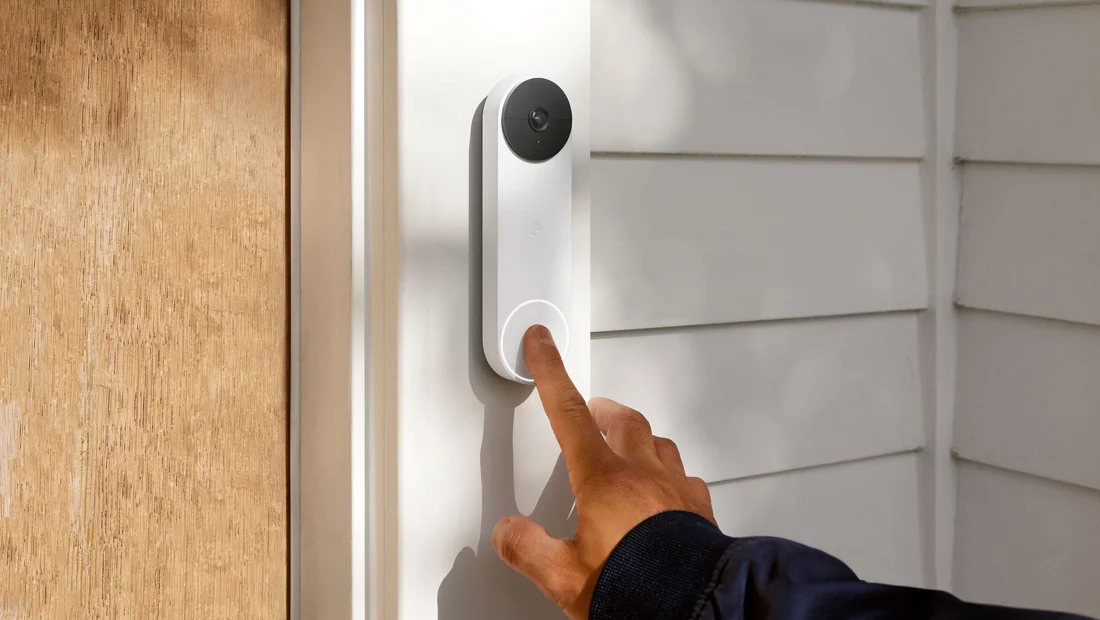An In-depth Guide to Doorbell Types, Battery Replacement, and Choosing the Right Lithium Battery
- September 21, 2023
- Venier

The humble doorbell has come a long way since its invention, evolving from simple mechanical chimes to high-tech, wireless devices that offer various features and functionalities. In this essay, we will explore the different types of doorbells, the essential considerations when replacing their batteries, and how to choose the right lithium battery for your doorbell.
Types of Doorbells
Doorbells serve a fundamental purpose: to notify occupants of a home or business that someone is at the door. Over time, doorbells have evolved to cater to diverse preferences and needs. Here are some of the primary types of doorbells available today:
1. Traditional Wired Doorbells
Traditional wired doorbells are hardwired into the electrical system of a building. They consist of a push button at the front door and an indoor chime unit. When the button is pressed, it completes an electrical circuit, causing the chime to ring. These doorbells are reliable and don’t require battery replacement, but they can be more challenging to install due to the wiring involved.
2. Wireless Doorbells
Wireless doorbells have gained popularity due to their ease of installation. They typically consist of a wireless transmitter (the push button) and a receiver (the chime unit), which can be plugged into an electrical outlet. Wireless doorbells use radio frequency (RF) technology to transmit the signal, eliminating the need for wiring. They often offer various chime sounds and adjustable volume settings.
3. Video Doorbells
Video doorbells are a modern innovation that integrates a camera with a doorbell. They allow you to see and communicate with visitors via a smartphone app or a dedicated monitor. Video doorbells provide an added layer of security and convenience, as they can capture footage of anyone approaching your door. These doorbells are typically wireless and require power from a built-in rechargeable battery or hardwiring.
4. Smart Doorbells
Smart doorbells take the concept of video doorbells to the next level by connecting to your home’s Wi-Fi network and offering advanced features. They often include motion detection, two-way audio communication, and cloud storage for video recordings. Smart doorbells can be controlled and monitored remotely through a mobile app, making them a valuable addition to a smart home ecosystem.
5. Battery-Powered Doorbells
Battery-powered doorbells, as the name suggests, rely on batteries for their operation. These doorbells are wireless and are suitable for locations where wiring is impractical. They are available in various styles and offer a range of features, including chime options and some basic smart functionalities. Because they depend on batteries, it’s crucial to understand how to replace and choose the right battery for these devices, which we will discuss in the next section.
Battery Replacement for Doorbells
Battery-powered doorbells are a convenient choice for homes without existing wiring or for those who want a simple, wireless installation. However, proper battery maintenance and replacement are essential to ensure your doorbell functions reliably. Here are the key considerations when replacing the battery in a battery-powered doorbell:
1. Battery Type
The most common type of battery used in battery-powered doorbells is the lithium battery, particularly the 3V CR2032 coin cell battery. However, some doorbells may use different types, such as AA or AAA batteries. It’s crucial to identify the specific battery type recommended by the manufacturer to ensure compatibility and optimal performance.
2. Battery Life
Battery life can vary significantly depending on the doorbell’s usage and the quality of the batteries used. Lithium batteries, in general, have a longer lifespan compared to alkaline batteries. It’s essential to monitor the battery level regularly through the doorbell’s app or indicator lights and replace the batteries promptly when they run low to avoid interruptions in functionality.
3. Proper Battery Removal and Installation
When replacing the batteries in your doorbell, follow the manufacturer’s instructions carefully. Typically, you will need to open the battery compartment, remove the old batteries, and insert the new ones with the correct polarity (positive and negative terminals aligned correctly). Ensure that the battery contacts are clean and free from corrosion.
4. Dispose of Old Batteries Properly
Batteries, especially lithium batteries, should be disposed of properly to minimize environmental impact. Many communities have recycling programs for batteries. Alternatively, you can drop them off at designated recycling centers. Avoid throwing used batteries in the regular trash.
5. Maintain a Spare Set of Batteries
In order to prevent the inconvenience of accidental battery depletion, it is best to keep a spare set of batteries on hand. This way, you can quickly replace them when needed, ensuring that your doorbell stays up and running. VENIER is a professional manufacturer of lithium battery packs, providing customized services for doorbell lithium batteries.
6. Check Compatibility
Before purchasing replacement batteries, check the doorbell’s manual or label for specific battery model recommendations. Using the wrong type of battery can damage your device or lead to poor performance.
Choosing the Right Doorbell Lithium Battery
Selecting the appropriate lithium battery for your doorbell is crucial for ensuring its longevity and performance. Here are the steps to guide you in choosing the right doorbell lithium battery:
1. Check Manufacturer's Recommendations
Always start by consulting the manufacturer’s guidelines for your doorbell model. The user manual or product specifications will often include information about the recommended battery type and voltage. Following these recommendations ensures compatibility and prevents potential damage to the doorbell.
2. Battery Type and Size
Lithium batteries come in various sizes and types. The most common type for doorbells is the CR2032 coin cell battery, but other lithium battery sizes, such as CR123A or CR2, are also used in some models. Ensure you select the correct size and type specified by the manufacturer.
3. Voltage Rating
Lithium batteries typically provide a stable voltage output, such as 3V. It’s essential to choose a battery with the correct voltage rating that matches your doorbell’s requirements. Using a battery with the wrong voltage can lead to malfunction or damage.
4. Brand and Quality
Choose a reputable battery brand that is known for its quality and reliability. VENIER develops and produces batteries that meet industry standards and provide consistent performance. Regular or off-brand batteries may not provide the same level of reliability.
5. Longevity
Consider the expected battery life when selecting a lithium battery. High-quality lithium batteries often last longer than cheaper alternatives. While they may cost slightly more upfront, they can save you money in the long run by requiring fewer replacements.
6. Temperature Range
Evaluate the operating temperature range of the lithium battery. Some doorbells are installed in extreme weather conditions, so it’s essential to choose a battery that can withstand temperature extremes without losing performance.
7. Storage Conditions
Pay attention to the manufacturer’s recommendations regarding storage conditions for the batteries. Improper storage can lead to reduced battery life. Store lithium batteries in a cool, dry place away from direct sunlight and moisture.
8. Warranty
Some reputable battery manufacturers offer warranties on their products. Consider choosing a battery with a warranty to provide peace of mind in case of any defects or issues.
Related Posts

The United States plans to build a complete lithium battery industry chain in the country: from mining to recycling
The new goal for the United States is to engage in all aspects of lithium-ion battery production, from mining to manufacturing, and ultimately recycling, within its borders by 2030. Failure to do so could jeopardize the country’s climate goals and its ability to compete in the rapidly growing electric vehicle industry.

Introduction to lithium-ion batteries, one of the most popular rechargeable batteries today
Lithium-ion batteries are one of the most popular rechargeable batteries today, and they are widely used in digital products, power tools and electric vehicles. This kind of battery achieves charge and release by embedding and removing lithium ions, and has the advantages of small size, light weight, fast charging, long service life and environmental protection.